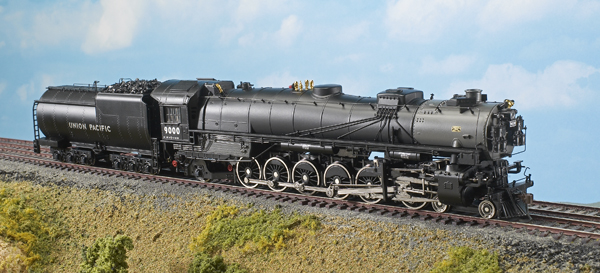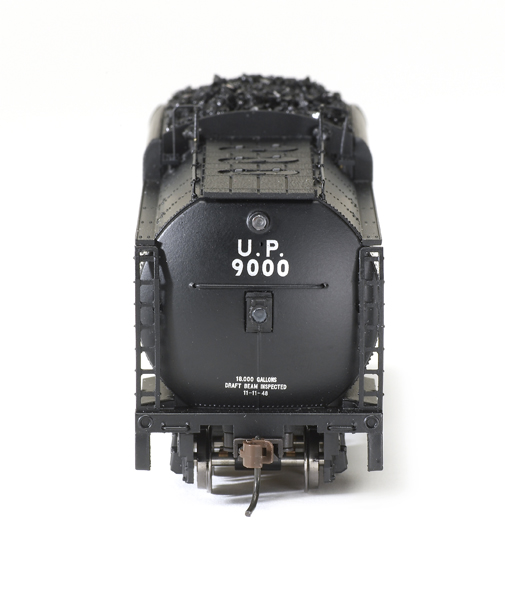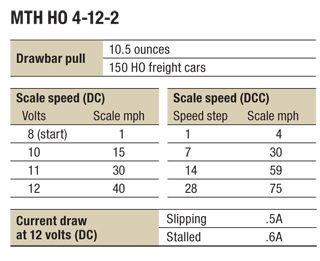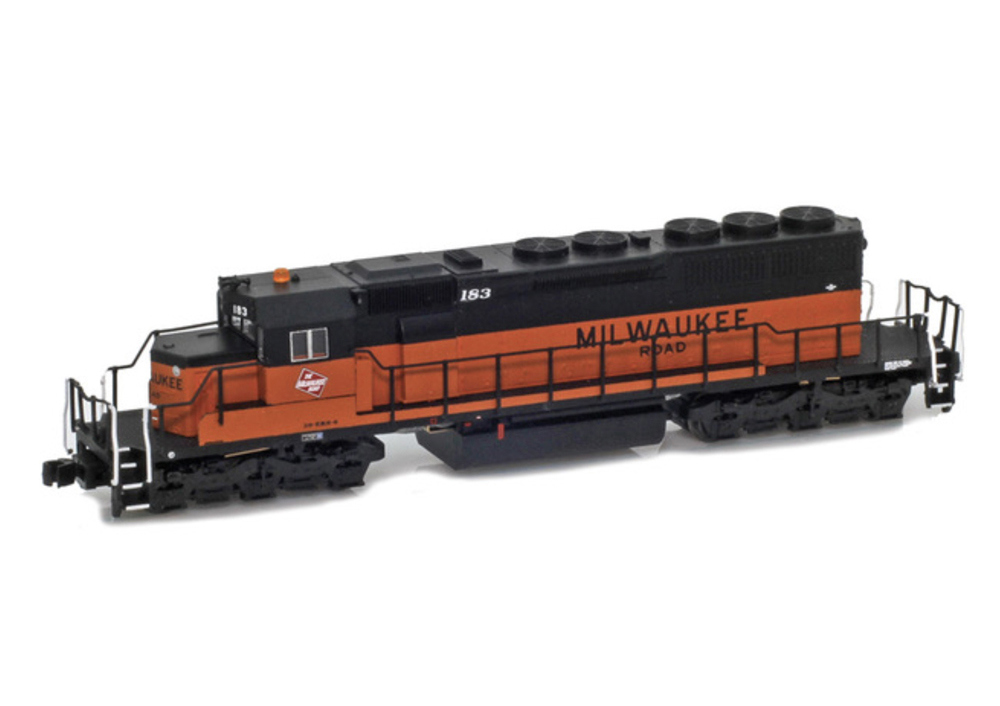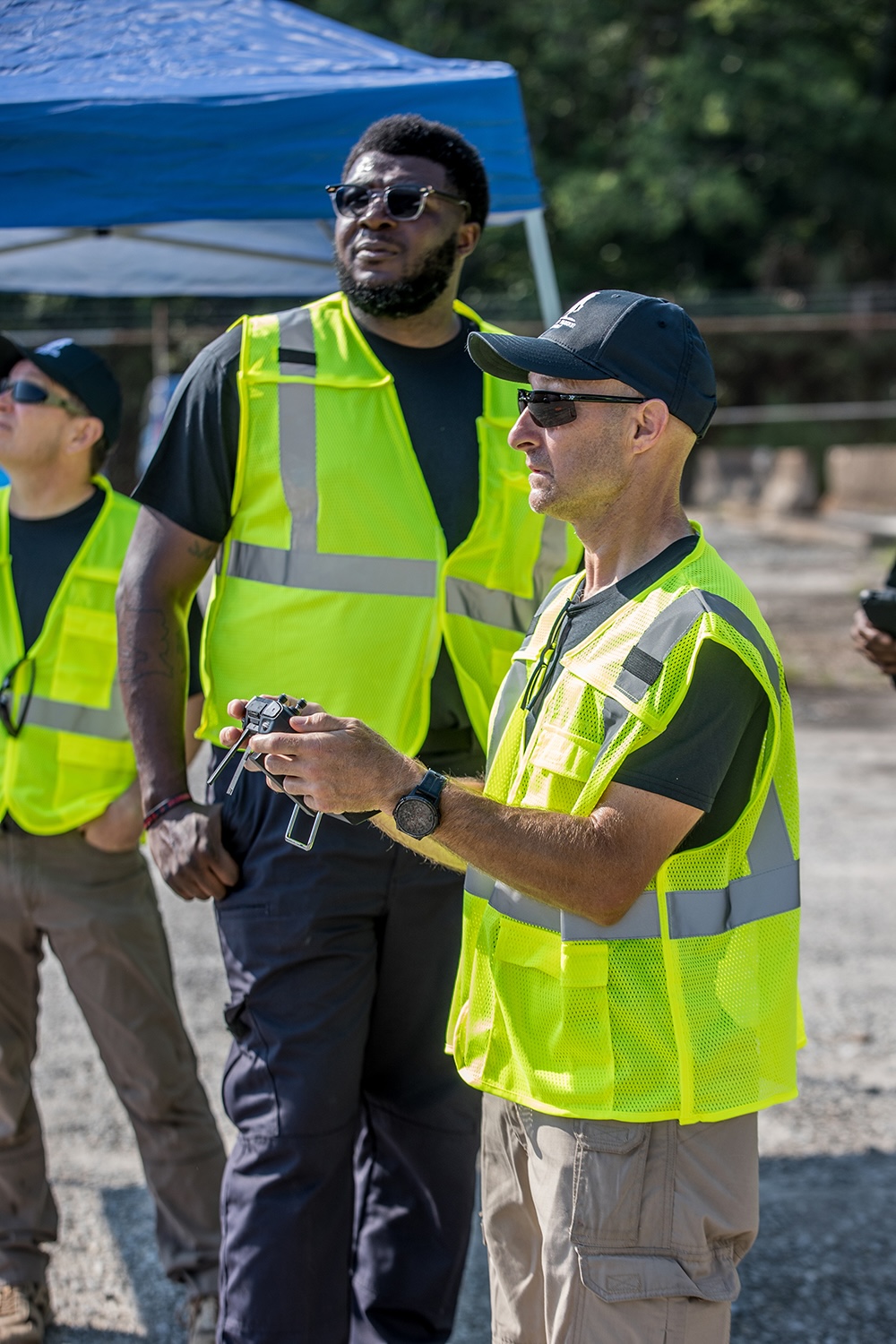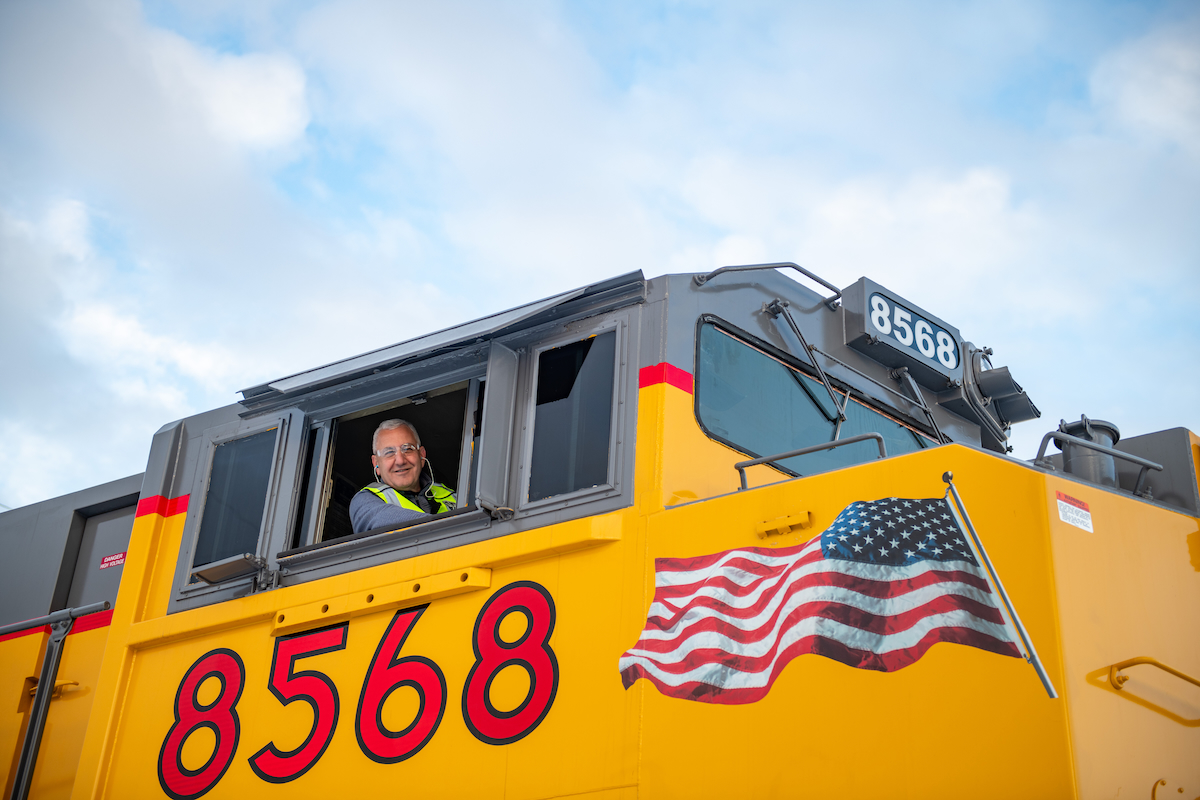Prototype. Between 1926 and 1930 the American Locomotive Co. delivered 88 4-12-2 steam locomotives to the Union Pacific RR. The massive three-cylinder engines could haul 125-car freight trains at 50 mph.
The 4-12-2’s two outside cylinders directly powered the third axle, while a cylinder mounted between them directly powered the second axle.
The third cylinder helped the engine deliver greater power more evenly. The arrangement produced more power without the need to increase the size of the cylinders. The smaller cylinders let the engine meet clearance requirements.
The unique locomotives hauled fast freight (and in emergencies passenger trains) into the 1950s.
The backhead is also about a scale foot farther back than shown in drawings, so the cab interior is more cramped than the prototype. The cab interior has painted crew figures, window glazing, and a folding cab apron.
The locomotive and tender are made primarily of die-cast metal and represent no. 9000 during the last decade of her career. Separately applied parts include a Worthington SA feedwater heater, which replaced Worthington BL feedwater heaters on 4-12-2s beginning in 1944. The UP installed New York Air Brake Co. sanders on no. 9000 after World War II, and these are separately applied parts on the M.T.H. model.
All the aluminum (silver) lettering is correct and crisply printed. Small printing is legible and matches the prototype. One discrepancy is that the “11-11-48” inspection and “18,000 GALS.” stencil are printed over a molded-in wiring conduit instead of behind it.
Mechanism. A can motor with a brass flywheel is housed inside the boiler. The motor is connected to gearboxes on the third and fifth axles. Both drivers on the fifth axle have traction tires.
Unlike its prototype, the frame of the model is hinged between the third and fourth axle. There’s an elongated slot in the side rod, connected to the third axle. This allows the pin connecting the eccentric crank and third driver to slide back and forth as needed when the model rounds a curve.
A user-installed chassis-locking plate is included with the model. Once installed the frame is rigid, but the minimum radius required to run the engine increases from 22″ to 42″. Installing the locking plate requires removing the top half of the boiler. A video on the M.T.H. Web site shows the installation.
Like the prototype, the model has operating Gresley valve gear, and a center main rod connected to the second axle.
Metal contacts inside the locomotive’s drawbar make a wireless connection to a pin on the tender. Additional electronics and a speaker are inside the tender. An on/off switch for the smoke unit is under the rear water hatch, and a master volume knob is under the center water hatch.
In DC the lights and sound came on at 7 volts, and the model started moving at 8 volts. Although our standard speed test for DC goes up to 12 volts, the instruction manual states that the 4-12-2 will reach a prototypical top speed at 16 volts.
I ran the model through no. 6 turnouts and crossovers in the yard on our layout. The 4-12-2 didn’t derail, and the sounds and lights remained constant.
Sounds and smoke. In DCC, the model has 28 user-controlled functions, including the whistle and bell. Function 4 triggers a water stop sequence, complete with a multi-part dialog between the engine crew. Function 5 turns on the cab interior light and the red marker lights and warning light on the tender.
The model’s 10 programmable configuration variables include the long address and acceleration and deceleration rates. The model can only be programmed on the main.
I also accessed all the locomotive’s functions using an M.T.H. DCS Digital Commander.
In DC, sounds and smoke are limited to automatic features, such as the chuffing sounds and operating smoke.
The sounds include the correct six chuffs per wheel revolution. (The third cylinder accounts for the additional two chuffs.) The operating smoke unit is synchronized to the chuffing sounds and the motion of the drivers. This feature is especially noticeable at slow speeds when thick, distinct puffs of white smoke shoot out of the smokestack.
Although the model reflects some compromises to allow it to negotiate 22″-radius curves, the M.T.H. 4-12-2 Union Pacific type is an impressive model of a uniquely UP prototype.
Price: $549.95
Manufacturer
M.T.H. Electric Trains
7020 Columbia Gateway Dr.
Columbia, MD 21046-1532
www.mthhotrains.com
Road numbers: (all Union Pacific) nos. 9000, 9010. Numbers 9503 and 9512 also have Oregon Short Line
(O.S.L.) markings
Era: detailed for mid-1940s to 1956
Features
Automatically switches between DC, Digital Command Control, and M.T.H. Digital Command System modes
Constant brightness headlight and backup light
Electrical pickup on 10 drivers and all tender wheels
Engine and tender weight: 2 pounds 21/2 ounces (Engine alone: 1 pound, 5.5 ounces)
Fan-driven smoke unit
Five-pole skew-wound motor with brass flywheel
Metal RP-25 contour wheels in gauge
Minimum radius: 22″
M.T.H. Proto-Sound 3.0 system operates on DC, DCC, and DCS
Optional drivers without traction tires
Sprung drivers
User-installed operating magnetic knuckle couplers at correct height





